By Martin K.A. Morgan
When we remember the 13,000 paratroopers and glider infantrymen who contributed so significantly to the hard-won success of June 6, 1944, we tend to remember the stories that leave us with something to admire. Extreme heroism, decisive leadership, and noble self-sacrifice give us reasons to believe in the greatness of a generation who went to France that summer to be a part of its liberation.
It is also important to remember that the battle in Normandy could be brutal—that lives could be brought to an end by the kind of ferocity that is not always associated with the war in northern Europe. For some U.S. paratroopers, the bitter end was neither glorious nor redemptive. For some, June 6, 1944, brought a violent end in an action that few have ever heard of.
The following story relates what happened to eight U.S. paratroopers on June 6. This is the story of eight men who only lived through the opening hours of France’s liberation. What happened to them simply slipped into obscurity. This is the story of the massacre at Hémevez.
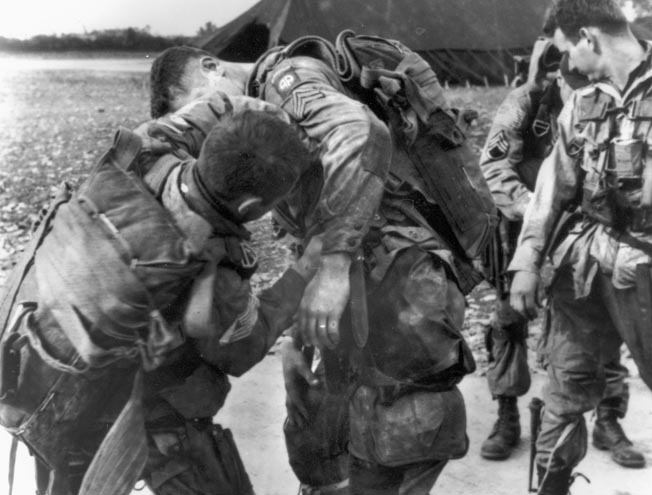
Shortly before 11 pm on Monday, June 5, 1944, C-47 #42-92382 took off from the airfield at Fullbeck, near Grantham in Lincolnshire, 109 miles north of London. It was but one of the 45 C-47s making up Serial 26 of Mission Boston, the airborne movement of the U.S. Army’s 82nd Airborne Division to Normandy for D-Day.
Once all 45 aircraft had assembled after takeoff, the formation flew southwest over the city of Bristol and from there due south toward Weymouth and the isle of Portland. The C-47s of Serial 26 then flew into the gathering darkness over the English Channel. On board #42-92382 were four aircrewmen from the 303rd Troop Carrier Squadron, 442nd Troop Carrier Group, in addition to a “stick” of 15 paratroopers from the Headquarters Company of the 1st Battalion, 507th Parachute Infantry Regiment.
For the aircrew, the mission that night was simple: navigate to Normandy’s Cotentin Peninsula and drop the 15 paratroopers over Drop Zone T—an open expanse of flat prairie three miles northeast of the town of Ste.-Mère-Église. But as C-47 #42-92382 droned across the Channel, the paratroopers on board the aircraft had no idea that they were about to be misdropped.
At about 2 am, the aircraft of Serial 26 turned southeast onto a heading that avoided enemy antiaircraft concentrations on the islands of Guernsey and Alderney. Fifteen minutes later, the formation crossed the Norman coast near Pointe Du Rozel north of Carteret and began the final approach to the drop zone.
Up to that point the weather conditions had been practically ideal, but then the C-47s entered a dense fog bank. So, during the last few minutes before the jump, right when the flight crew needed visibility the most, they lost it.
As C-47 #42-92382 pushed deeper into the obscuring cloud cover, it began to drift off course. But this was unknown to the stick’s jumpmaster, 2nd Lt. Robert W. Shutt, as he had the men stand up, hook up, and complete a last-minute equipment check.
It was then that jumper #12, Private Tress B. Balch, inadvertently opened his reserve parachute inside the aircraft. Because of this, he would not be able to jump. At 2:44 am, Lieutenant Shutt and the 13 other paratroopers on C-47 #42-92382 threw themselves out the jump door and into the predawn blackness of D-Day.
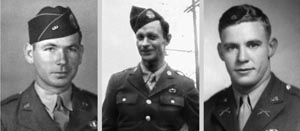
They came down, not on Drop Zone T, but on a field four miles to the northwest––a field just outside the village of Hémevez. Lieutenant Shutt quickly assessed the situation as soon as he was on the ground and recognized immediately that they were in the wrong place because, rather than having hundreds of other 1st Battalion/507th paratroopers around them, they were alone.
Making matters even more complicated, Shutt was made aware of the fact that not everyone from his stick made it through the jump unscathed: Corporal Fred G. Wondell and Private Robert G. Watson had both sustained injuries on landing. While Watson was able to limp on his lightly injured ankle, Wondell was in much worse shape.
He had landed in a tree, then fallen, broken his pelvis, and could be heard moaning in agony. Two of the other troopers from the stick helped him out of his parachute harness, removed his equipment, and administered morphine.
Lieutenant Shutt quickly decided to move the men into a nearby wooded area. It wasn’t big, only 250 by 200 feet, but it was enough to get the men some cover and concealment. Once the move was complete, Shutt counted heads and confirmed that 12 of the 14 men who jumped were present. He ordered the men to spread out along the tree line to guard against being surprised by the enemy.
Shutt then picked three men—Private Ashton Landry, Pfc. Paul Moore, and Pfc. Charles Wright––and ordered them to go on a patrol to determine their location. A farmhouse could be seen 750 feet away to the northeast, so Shutt instructed the men to go there, make contact with the residents inside, and ask for directions.
The patrol left the wooded area shortly before daybreak, crossed a hedgerow-enclosed field, and, just after sunrise, reached the farm, which is called Le Castel. At the front door, 22-year-old Private Landry knocked while announcing that he was an American. A native of Westwego, Louisiana, Landry grew up speaking French first and English as his second language.
The lady of the house, Madame Brisset, and her daughters eventually came to the door and excitedly described that a German headquarters was only a kilometer away. They warned Landry that German foot patrols regularly passed and searched the farm and that they would be in great danger if they stayed.
Just then, the distinct sound of German hobnailed boots was heard approaching. Without hesitation, the youngest daughter motioned for the three paratroopers to follow and then led them into the barn where they quickly took up hiding places. The sound of the hobnails grew louder for a few more tense minutes but then began to fade as the enemy troops moved on.
After passing Le Castel, the 12-man German patrol proceeded another 150 meters south, left the road, and moved west down the length of the hedgerow leading to the woods. Lieutenant Shutt saw them coming, so he moved everyone (except, of course, the badly injured Corporal Wondell) into a creek ditch running along the western edge of the treeline and prepared for a fight.
The German patrol entered the woods from the east and walked up on Wondell almost immediately. They pointed their weapons at him, and their noncommissioned officer started asking questions. Although it was in German, Wondell could understand the basic gist of what he wanted to know: Are you wounded? Where are you wounded? Is there anyone else with you? Where are they?

As these questions were being asked, Shutt and the others opened fire. The Germans reacted quickly to contact by keeping up a steady fire as they began to spread out in the woods and move their submachine guns around the flank of the American paratroopers.
Bullets struck the ground around Wondell and zipped over his head in the trees. Then one of Shutt’s men lobbed a hand grenade at the enemy, but it exploded in a tree close to Wondell and showered him with branches and leaves. German grenades were thrown in response, and as the Americans attempted to shield themselves from fragments and return fire, their opponents began to envelope them.
Within just a few minutes the German squad had worked its way around both of Shutt’s flanks and overrun three of his men in brutal hand-to-hand combat. One of the three was the trooper with the injured ankle: 23-year-old Private Robert Watson. An attacking German soldier clubbed him with a rifle butt and knocked him to the ground. As he lay face down, he was apparently struck in the back of his head several more times with a rifle butt, crushing his skull.
A similar fate fell upon 24-year-old Pfc. Daniel B. Tillman—except that he fell on his back as the enemy clubbed him over and over again just above his right eye. The third man, 31-year-old Private Andrew W. Kling, was shot in the heart, bayoneted in the chest, and then struck in the head so many times by a rifle butt that the entire top of his skull collapsed.
Just as the firefight reached this grisly apex, the paratroopers stopped firing, and one of them waved a white handkerchief, marking the end of the battle.
Back at Le Castel, Landry, Moore, and Wright had just slipped away from their hiding place through a gate behind the barn, and they were about to continue their mission when they heard the gun battle erupting. Rifle fire, bursts from a submachine gun, and the reports of exploding hand grenades came from the direction of the woods.
The three men rushed down the narrow lane running from Le Castel to the farm at Le Val just as the guns quit firing, and from there they could see what was happening. From a distance of 100 meters, they looked on as the Germans rounded up, disarmed, and searched four of their squad mates. The men had their helmets off, and their field gear had been removed.
Landry, Moore, and Wright briefly discussed the possibility of firing on the Germans but could not do so out of the danger of hitting their comrades. They could see that the men were not being mishandled in any way and in fact the Germans actually returned their personal possessions—paybooks, money, letters from home, and even cigarettes. The trio then watched as Lieutenant Shutt and the others were led away, with four of the men carrying Corporal Wondell.
The prisoners were then marched a half mile to the Chateau d’Hémevez, where the Germans who captured them turned them over to a major by the name of Gustav Felix. As the officer in charge of the German 709th Static Division’s supply depot, Major Felix began interrogating the U.S. prisoners inside an underground concrete bunker that had been built on the chateau’s front lawn.
He started the questioning with Lieutenant Shutt, and then, after about an hour, the enlisted men were taken down into the bunker. Corporal Wondell had been laid down in the grass near the entrance to the dugout/bunker and remained conscious during part of this time. He remembered there being a large number of German officers around, none of whom spoke English.
One of them was obviously a medical officer because he conducted a cursory examination of Wondell’s injuries and then gave him a cup of water so that he could swallow a morphine tablet. After that, the corporal’s memory became foggy and imprecise.
At 7:30 am, a German Schwimmwagen (amphibious vehicle) arrived and took Shutt and Wondell away. Wondell ended up in the German field hospital in nearby Orglandes, and Shutt ended up, for the time being, as a prisoner of war in Rennes.
Soon after they were gone, the four remaining enlisted men were marched down the length of the chateau’s carriage road by four German guards. At the end of the driveway, their guards directed them to turn right and proceed north along the road leading to Le Castel.
By coincidence, 40-year-old Pierre Renault was on his way to work at Le Castel at the same time. He rolled up to the intersection of the Le Castel-Vaulaville roads on his bicycle just as the prisoners were marching by. As he passed them, Renault got a long look at the faces of the American prisoners. He then pedaled onward another 100 meters, stopped, and looked back at the soldiers.
Renault then watched as the Germans marched the Americans through a cattle gate leading into the field immediately to the east of the wooded area where the firefight had unfolded only two hours earlier. As soon as the soldiers were out of sight, he continued on to Le Castel and went to work.
The time was 8 am, Tuesday, June 6, 1944, and Renault had just begun chopping wood when he heard gunshots from the direction of the woods.
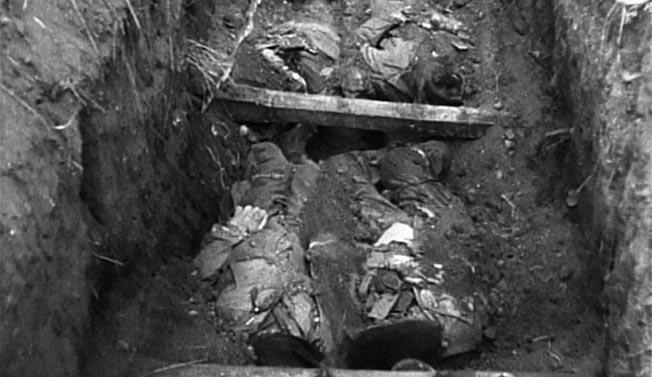
For reasons that remain unclear to this day, the Germans took the four enlisted paratroopers—Privates Robert E. Werner, Delmar C. McElhaney, and Anthony J. Hitztaler and Pfc. Elsworth M. Heck—to the spot where they had been captured earlier that morning and shot them all in the back of the head.
The Germans apparently intended to leave an impression that the four Americans had been killed with the others during the dawn gun battle because the bodies of the victims were dispersed in the woods near where they had all become prisoners.
That afternoon at 3, a Hémevez resident named Leon Lequartier entered the woods to collect kindling for a fire and quickly stumbled onto the bodies of the dead American paratroopers. He then rushed back into the village and reported what he had found to the mayor’s assistant, M. Emile Lainé. Lequartier then escorted Lainé to the woods to show him the scene of the crime.
When the two men returned to the village, Lainé was given a message from Major Felix at the chateau instructing him to bury the bodies that evening. He decided that this would be done in the cemetery of the village’s Église Notre-Dame and immediately set out to assemble as many of the men from the village as possible to carry out the task.
As soon as the village men had gathered, one team was put to work digging a common grave at the church, and one team went with M. Lainé down to the woods to recover the seven victims. He also sent for the Curé (parish priest) of nearby Urville so that a proper blessing could be offered during the burial. The bodies were soon delivered to the church cemetery in a wagon, at which time Lainé was careful to make sure that they could be identified.
Each American had two dogtags, one of which was left with the body tied to its left wrist. Lainé took the other dogtags back to his home and deposited them in a safe place. He also collected each man’s personal effects. Then, shortly after 6 pmon D-Day, the seven paratroopers were buried together in a brief but dignified funeral service.
The following morning, Lainé was informed that another dead American paratrooper had been found. The body was at the end of the carriage road leading to the chateau, and it was under the guard of two German soldiers. Dogtags identified the man as Private John Katona—a rifleman from C Company, 507th Parachute Infantry.
Although Katona was from the same regiment and battalion as the seven paratroopers who had been killed the previous morning, he had not been in the woods with them; his death appeared to be the result of combat rather than murder. Since the mass grave from the day before had already been sealed, workers dug a separate grave nearby, and Private Katona was buried alone in it.
During the next 10 days, Hémevez remained occupied by the Germans as the U.S. Army’s VII Corps fought an intense maneuver battle to cut off the Cotentin Peninsula. Although located only 12 miles from Utah Beach, it wasn’t until June 17, 1944, that U.S. forces reached the village.
When they did, M. Lainé turned over the dogtags and personal effects belonging to the eight Americans buried in the church cemetery. Furthermore, he told them that the paratroopers had been captured, disarmed, and executed. This revelation set in motion a process that ultimately resulted in this episode being documented in a unique way.
Just five days later, on Thursday, June 22, a team from the U.S. First Army’s Inspector General Division came to Hémevez. It included personnel from VII Corps headquarters, the 603rd Quartermaster Graves Registration Company, a translator, and a pair of photographers from the 165th Signal Photographic Company: one shooting stills and the other shooting motion picture footage. Since a war crime had been reported, the photographers were there to document every step of the investigation.
They went first to the woods where the brief firefight and the executions took place during the morning of June 6. Once there, a thorough search was conducted of the entire area by soldiers from the Graves Registration Company––a search that quickly identified the exact spot where each of the seven paratroopers fell.
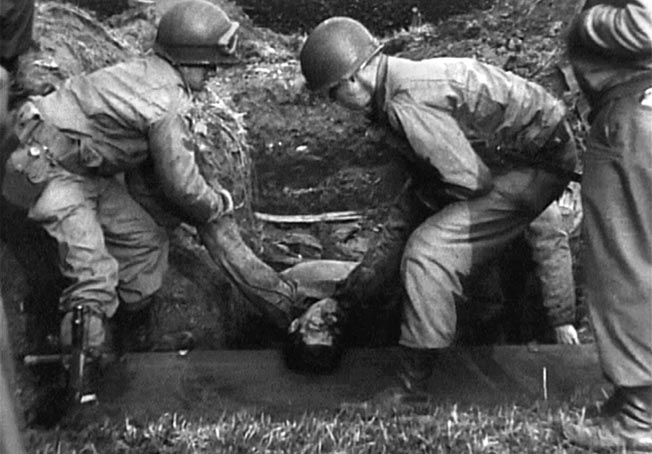
They then marked each spot—A, B, C, D, E, F, and G—with pages from a pocket notebook and the motion picture camera operator, Sergeant Thomas J. Maloney of the 165th Signal Photographic Company, filmed it all. Then, using soldiers from the First Army as stand-ins, they staged a reenactment of the scene that Pierre Renault witnessed shortly before 8 amon D-Day when four German executioners marched Werner, McElhaney, Heck, and Hitztaler through the cattle gate and across the field to the woods where they would be murdered.
From there, the investigative team moved into the cemetery to recover the bodies, and Sergeant Maloney continued filming. The team started with the single grave of John Katona, the C Company 507th paratrooper who was killed in combat elsewhere and later brought to Hémevez. After uncovering his body, it was removed from the temporary grave that the French prepared for it on June 7. It was then placed on a stretcher so that it could be examined by Colonel Rosser L. Hunter, First Army Inspector General, and Captain Theodore F. Wright, U.S. Army Medical Corps.
After that the team excavated the mass grave containing the remains of the seven paratroopers from the Headquarters Company of the 1st Battalion/507th who were buried during the evening of June 6. Since there had been no time to build proper caskets, the French simply laid the bodies at the bottom of the hole, inserted three crossbeams, and then covered them over with wooden planks.
One by one, the bodies were exhumed, placed on stretchers, and closely examined by Captain Wright. Every man’s wounds were then recorded in close detail: Pfc. Daniel Tillman’s skull was crushed above the right eye, Private Robert Werner was shot in the right cheek by a bullet that produced a large exit wound in his forehead, and Private Anthony J. Hitztaler was shot in the nape of the neck.
The wound to Private Delmar McElhaney’s head was so gruesome that the French covered his face with a handkerchief when they moved him from the woods to the church cemetery. That handkerchief was still present when his body was exhumed, and it covered a massive exit wound just above his left ear and the entry wound behind his right ear from the bullet that caused it.
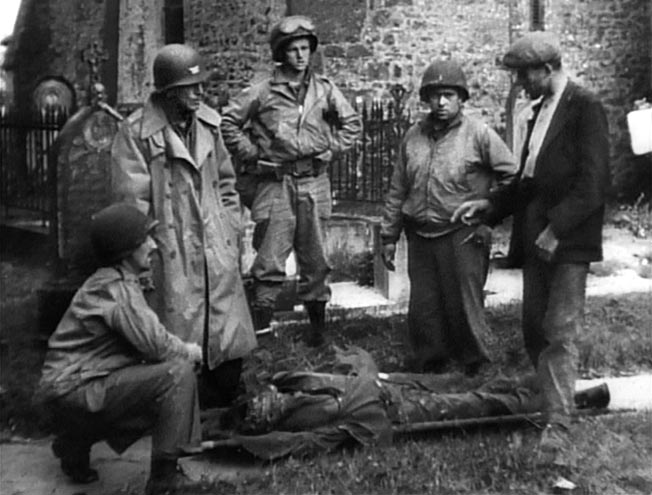
Private Robert G. Watson, the paratrooper who injured his ankle during the jump on D-Day, was found to have a cranial crush wound behind his left ear from being beaten by his murderer’s rifle butt while collapsed face down in the woods. Pfc. Elsworth Heck was shot behind the right ear as well, and the wound was pointed out for the camera using an M3 trench knife.
The body of the final victim, Private Andrew Kling, was the focus of special interest because of the extensive wounds it received at the hands of the enemy. Pierre Renault provided an eyewitness description for Colonel Hunter through his translator. He was especially animated in his description of recovering Kling’s body, which had suffered a gunshot wound under the left shoulder blade, a bayonet wound in the chest, and a devastating cranial wound.
With the work of examining the eight bodies at an end, they were carried out of the church cemetery on stretchers one after the other. Then they were placed on a truck and trailer belonging to the 603rd Quartermaster Graves Registration Company and driven 10 miles to the village of Ste-Mère-Église, where they were buried in the first of the two temporary U.S. military cemeteries located there.
But the investigation into the Hémevez Massacre did not end with the exhumation and reburial of the eight 507th paratroopers on June 22. Six weeks later, Colonel Hunter was back in England, and he traveled to Kingston Lacy, near Wimborne in Dorset, to visit the 106th General Hospital.
Corporal Fred Wondell, the paratrooper who broke his pelvis during the jump on D-Day, was there recovering from his injuries. The Germans had taken him from Hémevez to a field hospital at Orglandes on June 6. From there they transported him to the city of Valognes, and eventually on to the hospital in Cherbourg, where he was when U.S. forces liberated the city at the end of June.
Colonel Hunter interviewed Wondell at length about what happened at Hémevez, and he described his treatment by the Germans as having been “extremely considerate.” Wondell was not mistreated, and he did not see or hear anyone else being mistreated. Although it was unknown to Colonel Hunter at the time, Wondell was the sole survivor from the group of men taken prisoner because 2nd Lt. Shutt was shot and killed by the Germans while attempting to escape on July 6, 1944.
Nevertheless, all three of the men who were sent on the dawn patrol on June 6—Private Ashton Landry, Pfc. Paul Moore, and Pfc. Charles Wright—had survived the Normandy campaign and were therefore able to testify.
On November 1, 1944, an official court of inquiry was established. Six weeks later, on December 14, the court convened at the mayor’s office in Hémevez. For two days, testimony was heard from Landry, Moore, and Wright, but the opening of the Battle of the Bulge on December 16 put the proceedings on pause.
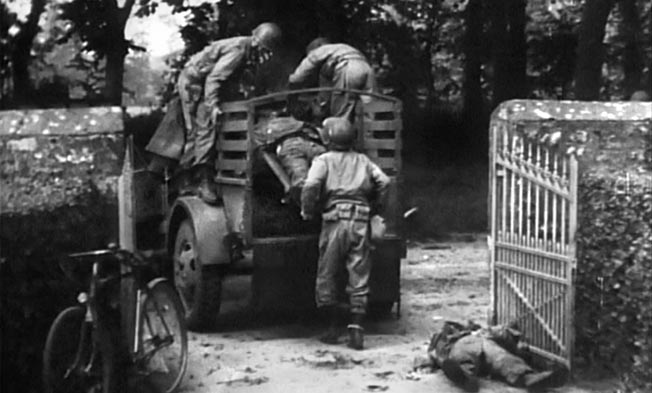
When the court reconvened on Saturday, January 13, 1945, Pierre Renault and Emile Lainé testified. The court also interviewed Ashton Landry again on January 16 but then adjourned to review the evidence and prepare the final report.
When that document was published on March 7, 1945, it found that there was no evidence indicating that any of the dead paratroopers had done anything to deprive themselves of the privileges and immunities they were entitled to as prisoners of war.
The court also found that the killings at Hémevez violated the Geneva Conventions of 1929, and therefore constituted murder, but justice would not be forthcoming. As the war approached its inevitable conclusion, no defendants could be found to stand trial for the crime and, for that reason, the case was closed.
Only the German officer who was in charge of the supply depot at the chateau was identified: Major Gustav Felix of the 709th Static Division. During interrogation he denied ordering the executions and blamed it on non-Germans from another unit. No one else was ever identified, and no one was ever placed on trial.
(Author’s note: My suspicion is that Major Felix ordered the men shot under the authority of Hitler’s so-called “Commando Order” of 1942. Since that was an illegal order, the shootings at Hémevez constitute murder. The First Army Inspector General could find no evidence that Major Felix ordered the executions, and Major Felix certainly did not confess, so the matter was closed with no charges being filed or convictions being ordered.)
The final report relating to the Hémevez Massacre, which included interview transcripts, maps, diagrams, and photographs, was eventually forwarded to the headquarters of General Bernard Law Montgomery’s 21st Army Group. That is because, at the time the crime was committed, the U.S. 12th Army Group had not yet been established and so U.S. troops in Normandy were under Montgomery’s command.
However, the motion picture footage that Sergeant Maloney had filmed of the exhumations on June 22, 1944, returned to the United States and eventually reached the National Archives and Records Administration. For over five decades that footage remained there but entirely out of context with the story associated with the village. In fact, the name “Hémevez” was not listed in either the finding aids or the reel of film itself.
The bodies of all eight 507th paratroopers who lost their lives at Hémevez on D-Day remained buried at the Ste-Mère-Église Number 1 temporary cemetery until 1948 when they were exhumed for a second time and moved to the U.S. Military Cemetery on the bluff above Omaha Beach near Colleville-sur-Mer.
Then, during the early 1950s, the U.S. government offered the families of the war dead from World War II the option of either leaving their loved ones buried in overseas cemeteries or having them returned to the United States at government expense.
During this time, Daniel Tillman’s body returned to North Carolina, Elsworth Heck’s body returned to West Virginia, Robert Watson’s body returned to New York, and John Katona’s body returned to Ohio.
The families of the other four Hémevez victims—Anthony Hitztaler, Robert Werner, Delmar McElhaney, and Andrew Kling—chose to have them buried in France, the country they came to liberate. Their temporary burials were thereafter converted into permanent ones in the new Normandy American Cemetery, which was dedicated in 1956. The four of them remain there to this day.
The village that honored the fallen U.S. soldiers with proper burials in June 1944 continues to honor their memory after more than seven decades. A sign on the cattle gate that leads down to the woods where the murders took place reads:
Passant, souviens-toi …
Le 6 juin 1944, 7 Parachutistes américains du
507e Régiment d’Infanterie, de la 82e Division
airborne—fait prisonniers—furent conduits en cette
endroit (bosquet de la Sauderaie), choisi par les allemands
comme théâtre de leur barbarie.
Ils y furent fusillés!
Ces 7 martyrs sont morts pour la France. N’oublions jamais….
(“Incidentally, remember … June 6, 1944, 7 U.S. Paratroopers of the 507th Infantry Regiment of the 82nd Airborne Division—captured—were taken in this place (grove of Sauderaie) and chosen by the Germans for an act of barbarism. They were shot there! These 7 martyrs died for France. Never forget….”)
But the reason these U.S. paratroopers were “chosen by the Germans for an act of barbarism” remains a mystery. Why would they extend “extremely considerate” treatment to the seriously injured Corporal Wondell but then ruthlessly murder the lightly injured Private Watson?
Why were Tillman and Kling savagely beaten to death when other men nearby were taken prisoner? Why would they take Lieutenant Shutt away for further interrogation but then execute Werner, McElhaney, Heck, and Hitztaler?
American paratroopers were being captured all around Hémevez on June 6 and 7, and the overwhelming majority of them were treated lawfully as prisoners of war. For some unknown reason, though, these seven paratroopers were murdered by men who attempted to hide their crime by making it look like their deaths happened in combat.
They are also remembered in the church cemetery with a memorial that, on one side, reads:
A LA MÉMOIRE DES 7
PARACHUTISTES AMÉRICAINS
DE LA 82eme DIVISION
AÉRO-PORTÉE EXÉCUTÉS
SUR LE TERRITOIRE
DE LA COMMUNE
LE 6 JUIN 1944
(“To the memory of 7 American Parachutists of the 82nd Airborne Division executed in the commune’s territory, 6 June 1944”)
But the other side of this memorial lists only the seven names of the paratroopers from the Headquarters Company of the 1st Battalion, 507th who were murdered. John Katona of C Company, 507th is not listed, but his presence at Hémevez is a recent revelation and something might yet be done to acknowledge that his life ended there at about the same time as the others.
Katona was only 23 years old when he was killed in action on D-Day, and he left behind a young wife in Cleveland named Mary. Like the other seven 507th paratroopers who, for 16 days in June 1944, were temporarily buried there, Katona came to France that summer to advance the cause of liberation.
Although the story of what happened to him and the seven others has fallen outside of the popularized historical narrative of the Normandy invasion, the village of Hémevez refuses to let their contribution to that cause be forgotten.
The sign on the cattle gate through which the victims were marched admonishes us with the words “N’oublions jamais” (“Never forget”)—and now that the full story is known, perhaps we never will.
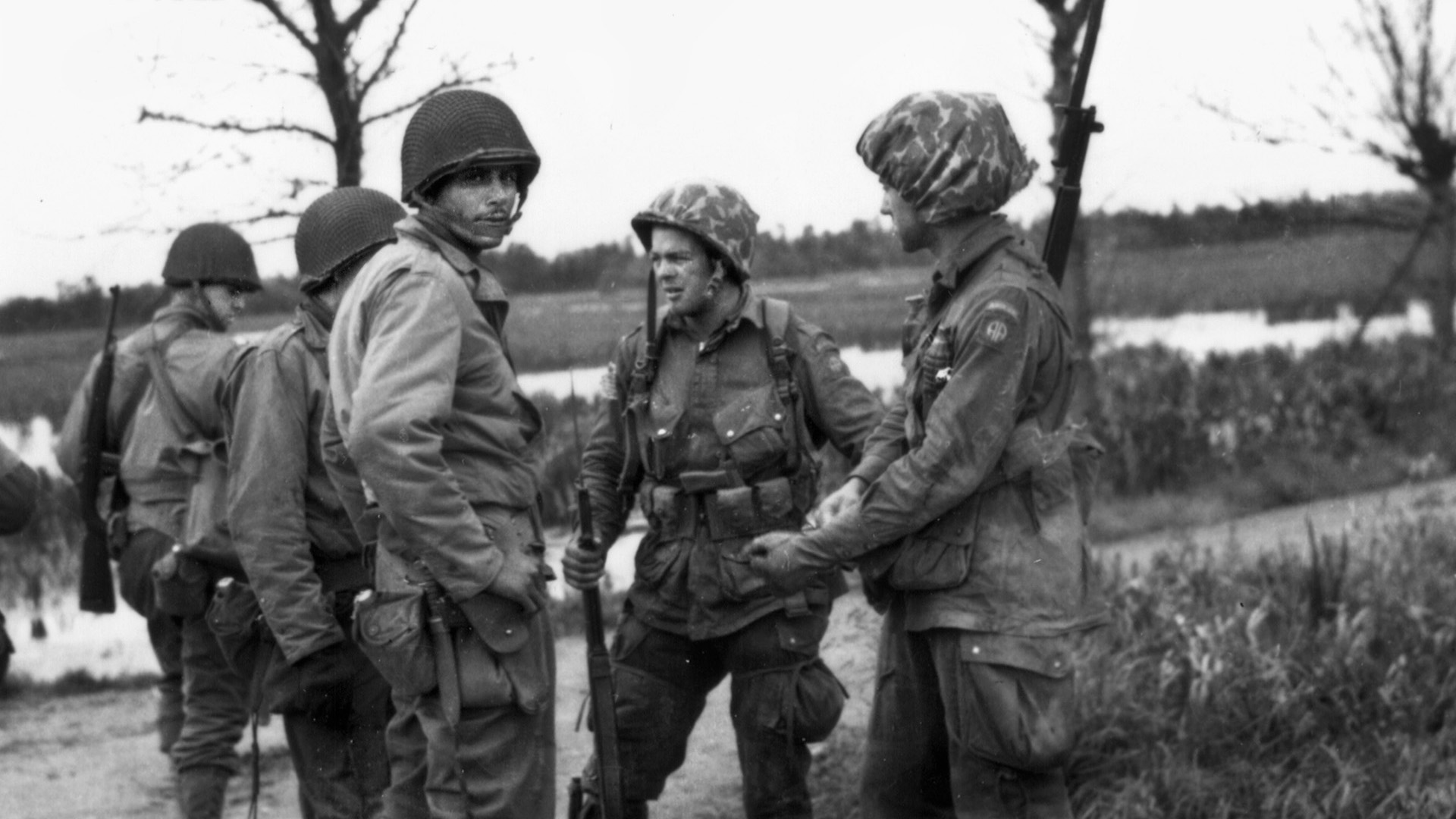
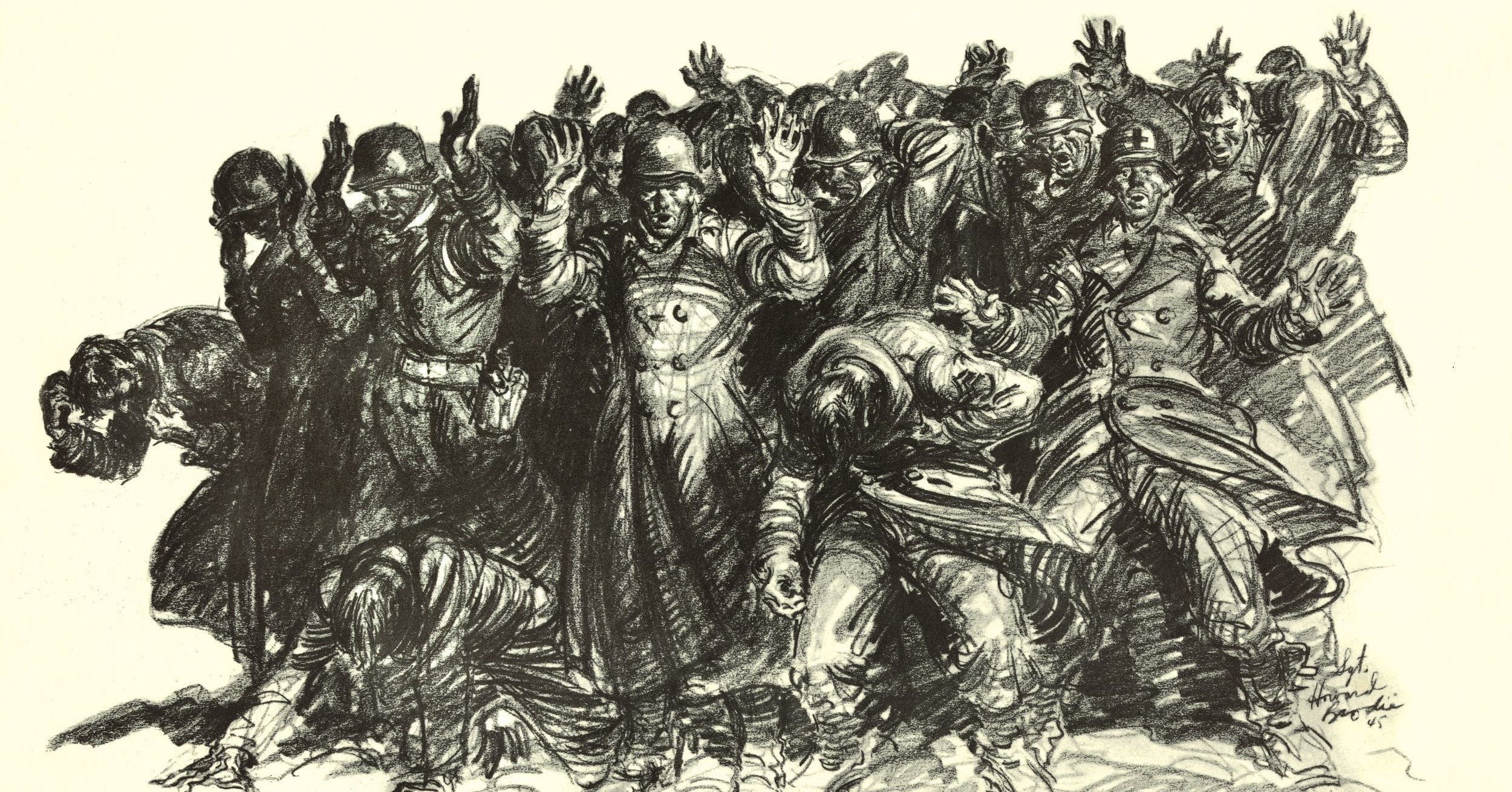
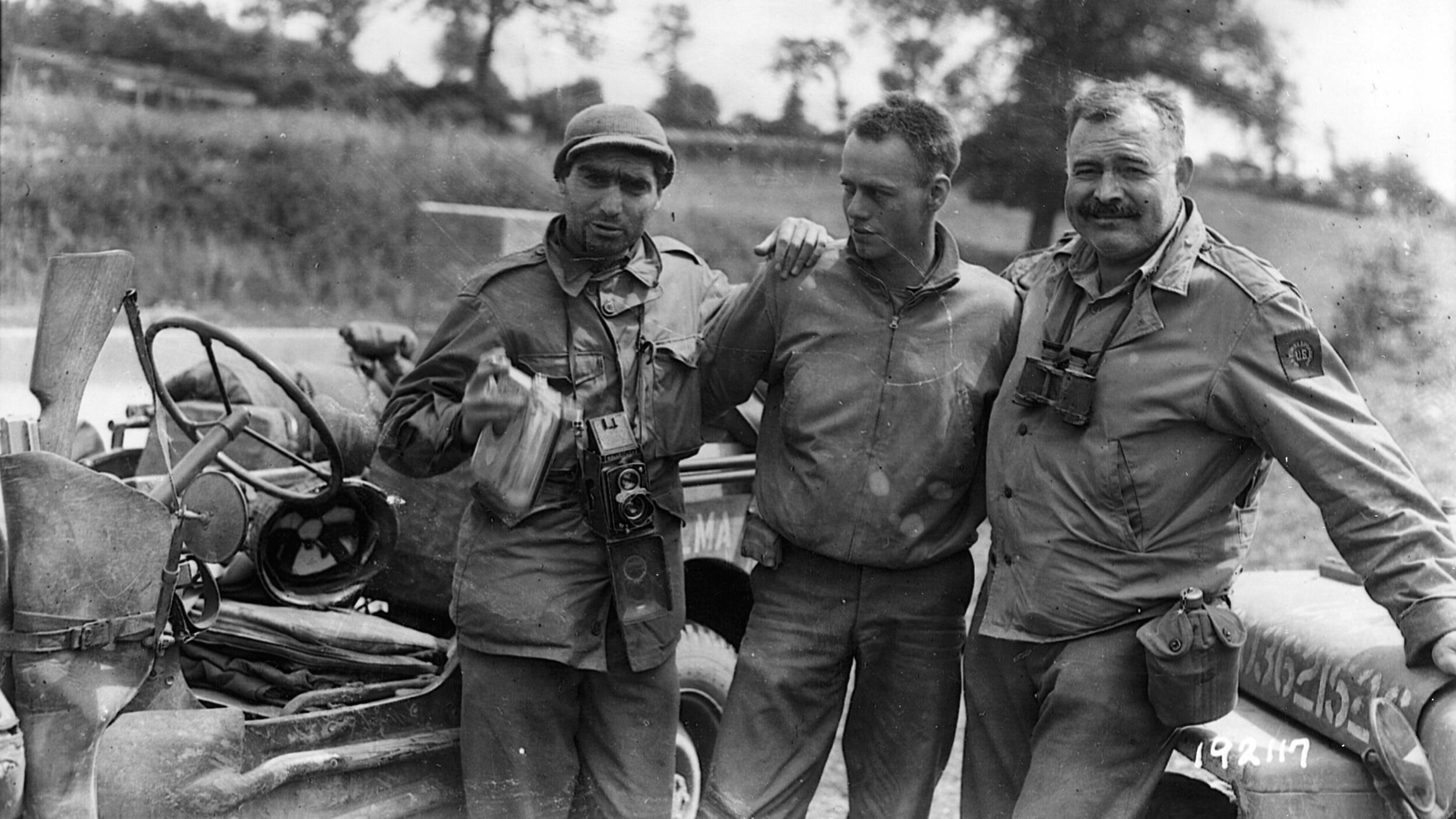
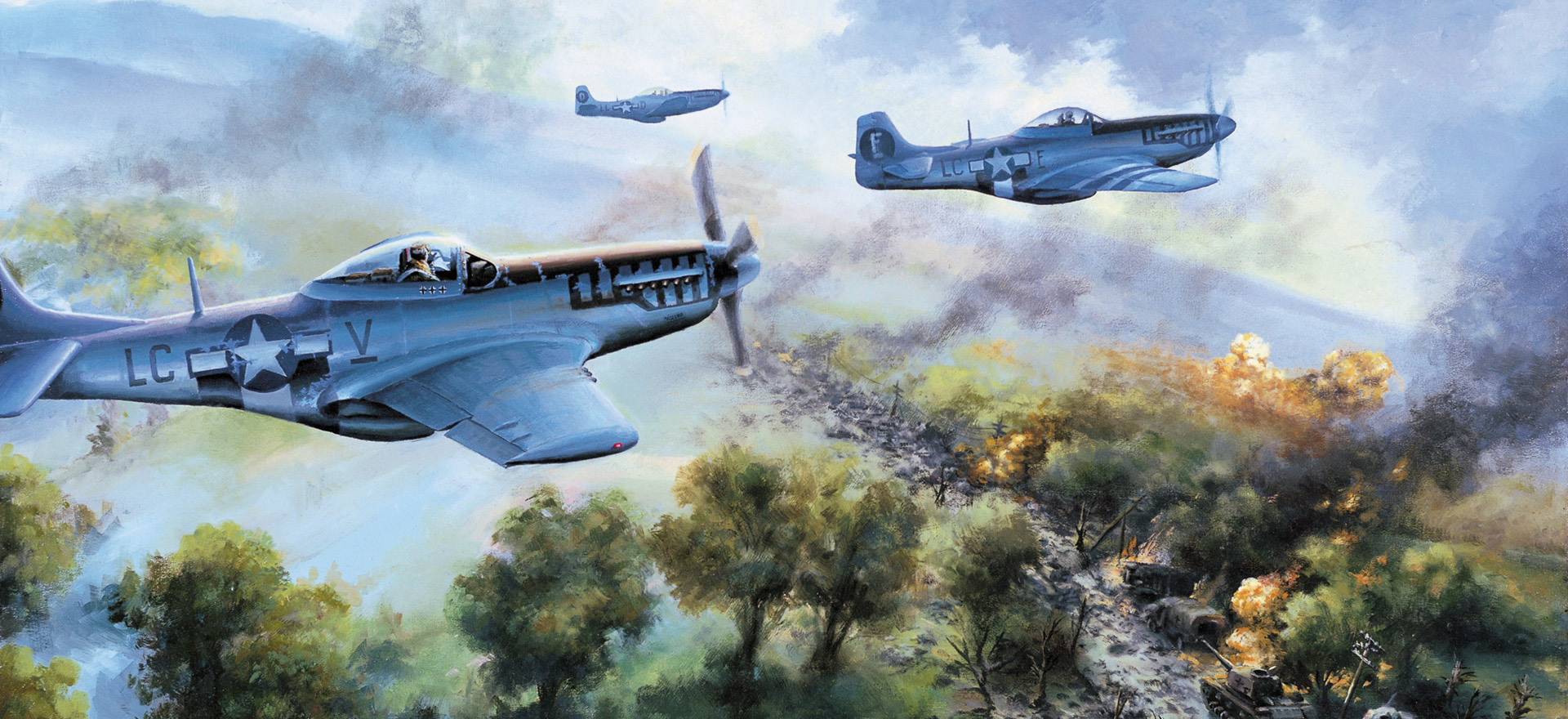
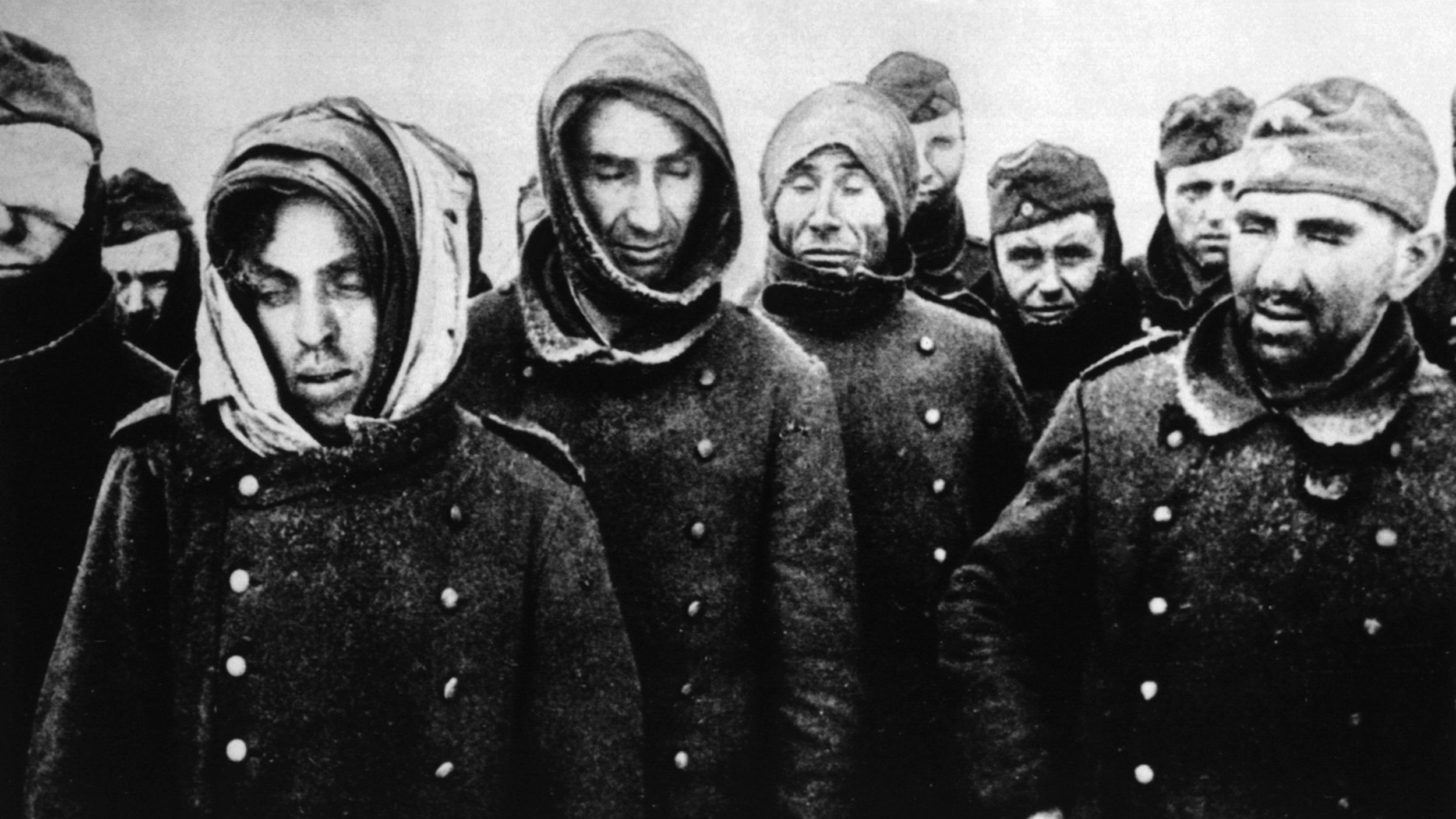
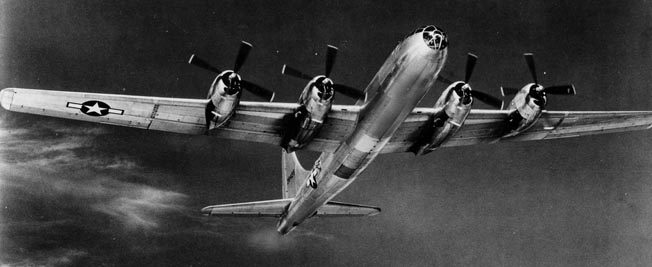
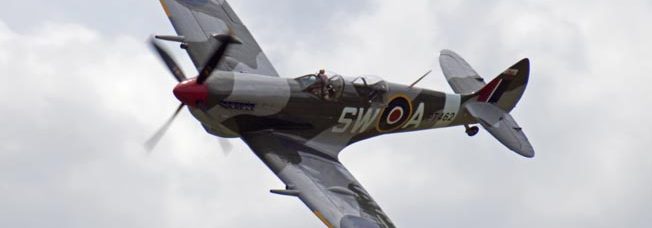
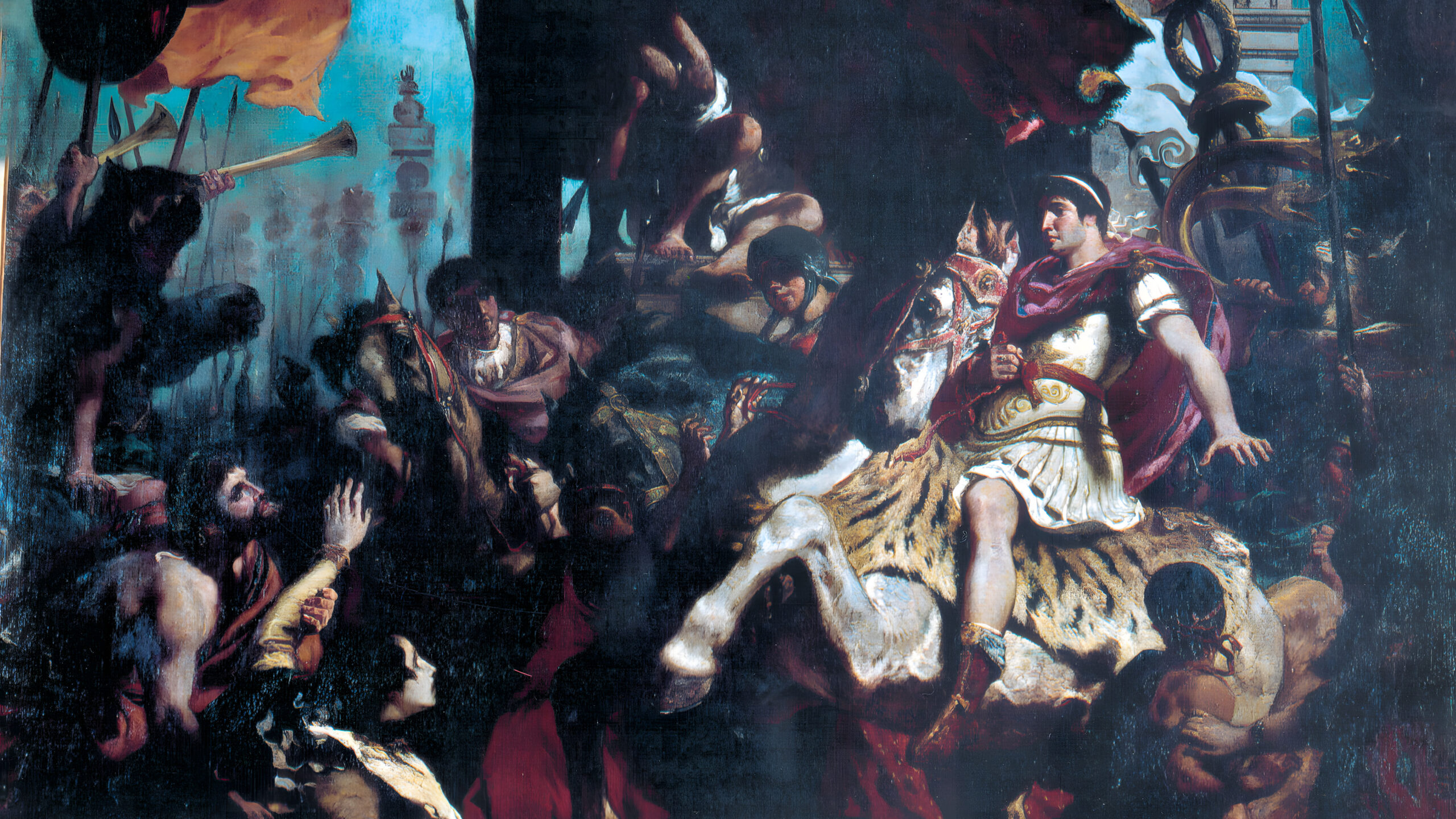
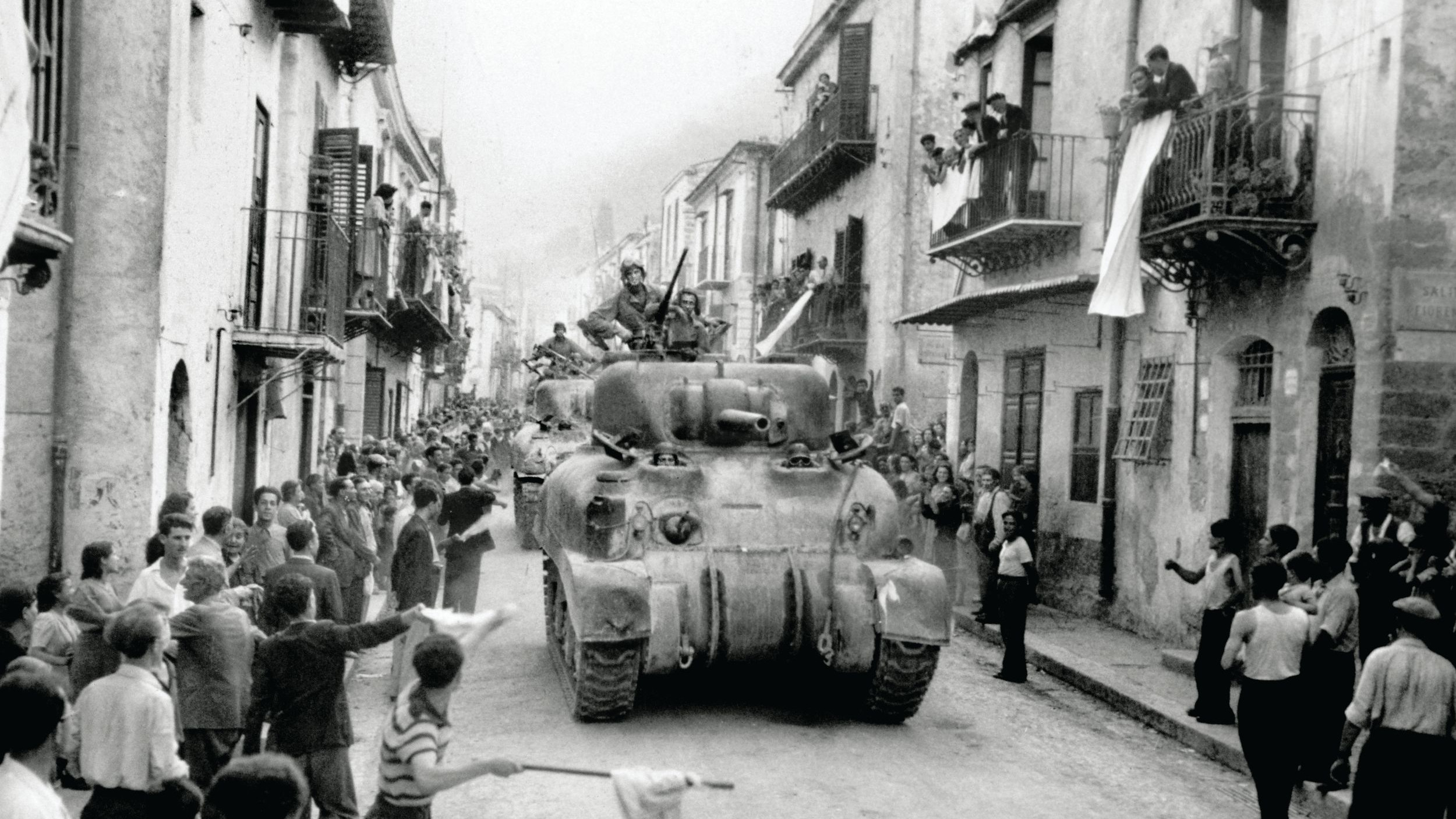
It was my uncle, Robert Watson, who was the more mildly injured paratrooper. My 90 year old mother (his younger sister) will be accompanied by me, my sister Kim Lipka and my husband to see this site in July. We had planned to see the American cemetery at Normandy Beach. Thank you for this information so that we will see the memorial here, as well. We had no idea what had transpired to my Uncle Bob after he had landed. Though he did not leave a wife, he did leave a fiance’, parents and 3 younger sisters who loved him.
Hello Vanessa,
I am a volunteer writer for Stories Behind the Stars. Our goal is to write the stories of all the fallen WWII heroes. (www.storiesbehindthestars.org). I am currently working on your uncle Robert G Watson. Would you be willing to speak with me regarding Robert? Our goal is to write a story that is respectful and provides a glimpse into the life of these men. You can reach me at [email protected] if you are interested. I can also fill you in regarding this project.
Thank you for your consideration.
Julie Sohlberg
This is Esther Carter, daughter of Abbie and Abel Gregory who raised Robert “Bob” Watson. Bob was 10 years old when i was born so I can tell you what went on from that time. My mother talked about Bob coming to their house. There was an ad in the newspaper that a family was needed for a little boy. My parents got in touch with the people who had Bob (who was about 5 or 6) and said they would be willing to take him. He then came up from NYC and though never officially adopted he lived with us the remainder of his life. If you would you call me I could tell you more happenings of his life. My phone number is 518 796-9460. (Our trip to France to see Bob’s monument has been postponed to the end of August due to the pandemic)
Hi Julie – my great uncle John Katona was one of the fallen heroes you are researching. I’m interested in finding out more about that day and the events that lead to the wrong drop zone and the death of the 8 paratroopers. Would you be willing to speak with me about the details of this event from the interviews you have conducted?
Sincerely,
Rhonda
Hi Vanessa: My great uncle John Katona was also apart of the group of paratroopers. I have only recently learned of his story through family members. Did you make the trip to Normandy Beach? I’m writing a WWII historical novel and found a dead end on learning more from the paratroopers who survived to pass on their stories to family and friends. By chance, would you be willing to talk and share what you know?
Sincerely, Rhonda
Martin
Thank you for bringing this story to light so that these brave men can be honored for their service and sacrifice. It is disappointing that no one was brought to justice over this tragedy.
Dave